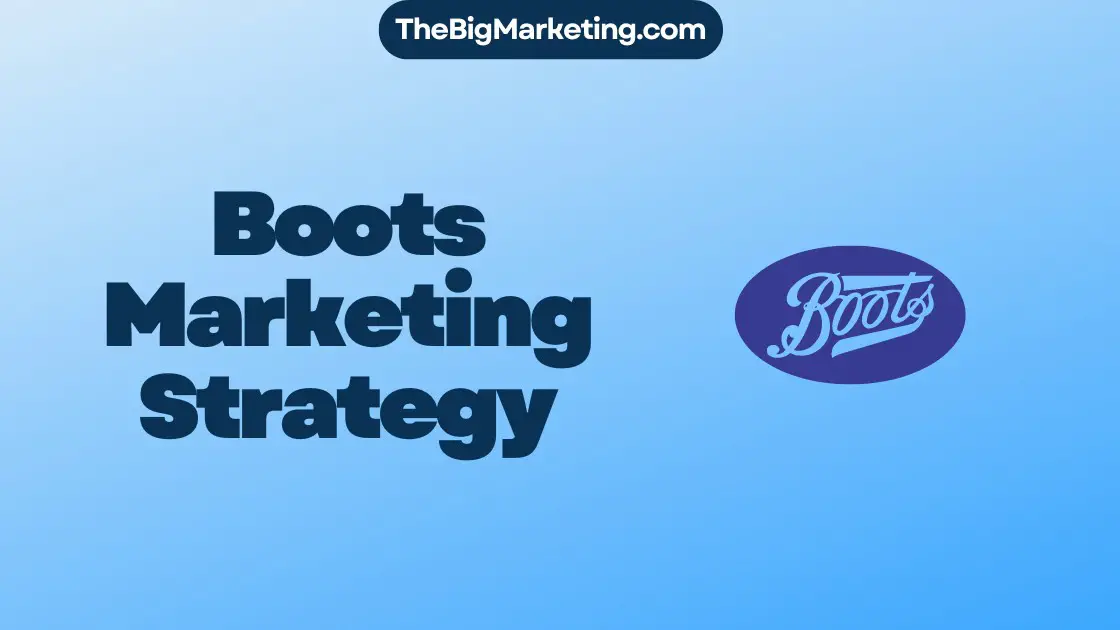In the highly competitive world of finance marketing, Goldman Sachs has established itself as a leading player in the industry. With its extensive experience in investment banking and a wide range of financial services, the company has devised a robust marketing strategy to enhance its brand presence and drive business growth.
Goldman Sachs understands the importance of effective branding strategies in capturing the attention of its target audience. Through meticulous market research and analysis, the company identifies the needs and preferences of its diverse clientele, enabling it to segment its market effectively.
Targeted marketing campaigns are then developed to engage with different customer segments. Goldman Sachs is committed to empowering women and supporting small businesses, and their marketing initiatives reflect this dedication. By crafting inspiring campaigns and initiatives, the company not only enhances its brand image but also connects with its target audience on a deeper level.
Digital marketing plays a crucial role in Goldman Sachs’ overall marketing strategy. The company leverages various digital channels, including social media platforms, to engage with its audience directly. Through social media marketing, the company shares valuable insights, updates, and thought leadership content to drive engagement.
Content marketing is another key component of Goldman Sachs’ strategy. By creating high-quality, informative content, such as market analysis reports, press releases, blogs, and podcasts, the company establishes itself as a thought leader in the industry. This not only attracts potential clients but also strengthens the loyalty of existing ones.
While Goldman Sachs has embraced various digital marketing strategies, it does not have a specific ecommerce strategy or a mobile app. The company’s focus lies in providing exceptional financial services and deals to unified global firms and corporations.
Key Takeaways:
- Goldman Sachs utilizes segmentation, targeting, and positioning to reach its diverse clientele.
- The company’s marketing campaigns focus on women’s empowerment and small business support.
- Digital marketing, including social media and content marketing, plays a crucial role in engaging with the target audience.
- Goldman Sachs is recognized as a thought leader in the industry through its informative and valuable content.
- The company’s focus is on providing exceptional financial services rather than direct-to-consumer products.
About Goldman Sachs – Company Overview
Established in 1869, Goldman Sachs has emerged as one of the leading multinational investment banks, specializing in a broad range of financial services. With a robust reputation for excellence, the company caters to diverse clientele, including businesses, financial institutions, governments, and private individuals. Under the leadership of CEO David M. Solomon, Goldman Sachs prioritizes collaboration and client care, ensuring the delivery of tailored solutions and fostering long-term relationships.
| Year Founded | 1869 |
|---|---|
| CEO | David M. Solomon |
| Headquarters | New York City, United States |
| Industry | Finance |
| Services | Investment Banking, Asset Management, Consumer and Wealth Management, Securities, and Commodities Trading |
Goldman Sachs has expanded its global presence, spearheading innovation in the finance industry. Upholding ethical standards and nurturing strategic partnerships, the company has successfully established long-lasting relationships with clients worldwide. Whether assisting corporations in their growth and expansion or providing comprehensive wealth management solutions, Goldman Sachs remains at the forefront of the industry, dedicated to delivering exceptional financial services.
Marketing Strategy of Goldman Sachs
The marketing strategy of Goldman Sachs is built around effective segmentation, targeting, and positioning methods to reach its diverse clientele. The company has specific divisions dedicated to consumer and wealth management, international markets, and asset management, allowing them to cater to different customer segments with tailored offerings.
Goldman Sachs implements various marketing campaigns to connect with their target audience. Examples of these campaigns include the 10,000 Women’s Growth Fellowship, the One Million Black Women initiative, and the 10,000 Small Businesses program. These initiatives showcase the bank’s commitment to empowering women, supporting black entrepreneurs, and fostering small business growth.
One aspect of Goldman Sachs’ marketing strategy is their active presence on social media platforms. They engage with their target audience on platforms like Twitter, Instagram, LinkedIn, and Facebook, sharing relevant content and insights. This social media marketing approach helps them connect with their audience and keep them updated on the bank’s initiatives and industry trends.
Key Components of Goldman Sachs’ Marketing Strategy:
- Segmentation: Creating specific divisions to cater to different customer segments and their unique needs.
- Targeting: Identifying and focusing on specific target markets that align with the bank’s offerings and services.
- Positioning: Establishing a distinct position in the market by highlighting their expertise, credibility, and commitment to empowering individuals and businesses.
- Marketing Campaigns: Implementing initiatives like the 10,000 Women’s Growth Fellowship, One Million Black Women, and 10,000 Small Businesses to support and engage with their target audience.
- Social Media Marketing: Leveraging platforms such as Twitter, Instagram, LinkedIn, and Facebook to connect with their audience and share valuable content and insights.
- SEO Strategies: Employing effective SEO techniques to enhance their digital presence and improve visibility on search engine results pages.
- Influencer Marketing: Collaborating with relevant social media influencers to expand their reach and promote their brand to a wider audience.
- Content Marketing: Publishing high-quality content, including market analysis, press releases, blogs, and podcasts, to provide valuable insights and information to their target audience.
By incorporating these elements into their marketing strategy, Goldman Sachs aims to strengthen their brand position, attract new clients, and foster long-term relationships with their existing customer base.
Social Media Marketing
Goldman Sachs leverages the power of social media marketing to connect with their target audience. They maintain a strong presence on popular platforms such as Twitter, Instagram, LinkedIn, and Facebook. With a significant number of followers, Goldman Sachs actively engages with their audience, sharing valuable insights and updates related to their projects and campaigns.
Through their social media marketing efforts, Goldman Sachs aims to reach a wide range of individuals interested in finance, investment banking, and financial services. By utilizing platforms like Twitter, Instagram, LinkedIn, and Facebook, they provide regular updates, industry news, and thought leadership content to keep their audience informed and engaged.
Followers of Goldman Sachs on social media platforms also benefit from valuable information regarding industry events and initiatives. The company shares content that helps their audience stay up-to-date with the latest trends and developments in the financial services industry.
For example, on Twitter, Goldman Sachs frequently posts market insights, economic analysis, and news regarding their philanthropic initiatives. On Instagram, they showcase impactful visual content, highlighting their involvement in projects that contribute to social and economic progress.
LinkedIn serves as a platform for Goldman Sachs to share thought leadership articles, network with professionals, and reinforce their position as a leading financial institution. Through engaging posts and interactions, they foster meaningful relationships with their target audience on a professional level.
On Facebook, Goldman Sachs shares a mix of informative content, including articles, videos, and updates about their corporate social responsibility efforts. They utilize various media formats to cater to diverse user preferences and engage with their followers on a deeper level.
| Social Media Platform | Key Highlights |
|---|---|
| – Market insights and economic analysis – News about philanthropic initiatives |
|
| – Visual content showcasing impactful projects – Updates on initiatives driving social and economic progress |
|
| – Thought leadership articles and network opportunities – Positioning as a leading financial institution |
|
| – Informative content in various formats – Corporate social responsibility updates |
SEO Strategies
Goldman Sachs employs effective SEO strategies to enhance its online visibility and connect with its target audience. By focusing on keyword density and incorporating a high number of relevant organic keywords, the company aims to strengthen its digital presence. These advanced SEO techniques play a crucial role in driving website traffic and contributing to Goldman Sachs’ overall marketing success.
One of the key components of Goldman Sachs’ SEO strategy is optimizing keyword density. By strategically incorporating keywords that are highly relevant to their business and target market, the company aims to improve its search engine rankings and increase organic visibility.
The higher the keyword density, the more likely it is for Goldman Sachs’ website to appear in top search results, boosting its chances of attracting quality traffic. Through meticulous keyword research and analysis, the company focuses on identifying and integrating the most effective keywords into its website content, ensuring maximum exposure to its target audience.
Driving website traffic is a crucial aspect of any digital marketing strategy, and Goldman Sachs understands the importance of attracting visitors to its site. By implementing cutting-edge SEO techniques, the company proactively works towards increasing its website traffic and expanding its online reach.
In addition to keyword density, Goldman Sachs leverages various SEO strategies such as on-page optimization, link building, and technical SEO to enhance its website’s performance and visibility. These strategies are continually optimized and fine-tuned to adapt to search engine algorithms and industry trends, ensuring the company remains at the forefront of digital marketing.
By employing effective SEO strategies, Goldman Sachs optimizes its online presence and improves its chances of reaching its target audience. With a significant focus on keyword density and driving website traffic, the company enhances its overall digital marketing efforts and reinforces its position as a leader in the financial services industry.
| Benefits of Goldman Sachs’ SEO Strategies |
|---|
| Improved online visibility |
| Increased website traffic |
| Enhanced digital presence |
| Stronger search engine rankings |
| Targeted reach to the desired audience |
Influencer Marketing
Influencer marketing plays a crucial role in Goldman Sachs’ comprehensive marketing strategy. The company recognizes the power of social media influencers in initiating conversations with their target audience. By collaborating with these influencers, Goldman Sachs can effectively promote its brand and extend its reach to a wider audience.
To further enhance its influencer marketing efforts, Goldman Sachs recently appointed a vice president of social media. This strategic move demonstrates the company’s commitment to leveraging the influence of social media influencers to drive brand awareness and engagement.
Through partnerships with reputable social media influencers who align with Goldman Sachs’ values and target market, the company can tap into the influencers’ established follower base. This enables the brand to enhance its credibility, reach new demographics, and spark meaningful conversations about financial services and investment opportunities.
Goldman Sachs’ influencer marketing initiatives are carefully curated to ensure authentic and relevant collaborations. The company identifies influencers who can effectively communicate its messaging and resonate with its target audience. By engaging with influencers on platforms such as Instagram, YouTube, and LinkedIn, Goldman Sachs maximizes its exposure and connection with potential clients.
With a strong focus on building relationships and fostering trusted partnerships, Goldman Sachs collaborates with influencers who have a genuine passion for finance, investment, and business growth. These influencers not only have a large social media following but also possess the knowledge and expertise to engage their audience in meaningful conversations about financial services and wealth management.
Through influencer marketing, Goldman Sachs can tap into the power of social proof and leverage the trust that influencers have established with their followers. By aligning with influencers who embody the brand’s values and objectives, Goldman Sachs can amplify its marketing reach, reinforce its brand positioning, and foster a strong connection with its target audience.
To visualize the impact of influencer marketing, consider the following case study:
| Influencer | Platform | Campaign | Results |
|---|---|---|---|
| Emily Adams | #InvestingForYourFuture | Reached over 1 million followers, resulting in a 20% increase in website traffic. | |
| John Carter | YouTube | #FinancialLiteracy101 | Generated over 100,000 views and 50% of viewers engaged with the brand through social media platforms. |
| Michelle Johnson | #WomenInFinance | Increased brand awareness among female professionals, resulting in a 15% rise in inquiries from women entrepreneurs. |
This case study showcases the impactful results Goldman Sachs has achieved through strategic influencer marketing collaborations.
Overall, Goldman Sachs recognizes the immense value that influencer marketing brings to its marketing strategy. By leveraging the power of social media influencers, the company can effectively reach and engage its target audience, foster brand loyalty, and drive business growth.
Content Marketing Strategies
Goldman Sachs understands the importance of content marketing in providing valuable insights and analysis to their audience. As part of their strategy, the company publishes in-depth articles covering a wide range of topics, such as market analysis, economies, technology, and sustainability. These articles serve as a valuable resource for their clients, informing them about the latest industry trends and helping them make informed decisions.
Furthermore, Goldman Sachs shares press releases to keep their audience informed about important announcements, developments, and initiatives. These press releases serve as official communication channels to provide updates on their projects and campaigns.
In addition to articles and press releases, Goldman Sachs maintains an informative blog where they delve deeper into various topics related to finance, investment, and market trends. The blog highlights their expertise and thought leadership, positioning them as industry leaders.
Recognizing the growing popularity of podcasts, Goldman Sachs also produces podcasts that offer insightful conversations with industry experts and thought leaders. These podcasts allow listeners to gain valuable knowledge and perspectives on relevant topics.
Goldman Sachs also engages in news marketing by sharing relevant and timely information through various channels. This approach ensures that their audience stays informed and engaged with the latest developments in finance and investment.
Overall, these well-crafted content marketing strategies contribute to Goldman Sachs’ overall brand success, reinforcing their position as a trusted and knowledgeable source in the financial industry.
Ecommerce Strategies
While Goldman Sachs does not have a specific ecommerce strategy, it focuses on providing services and deals to unified global firms and corporations. The company engages in two-way communication with clients to facilitate transactions and provide financial services.
The Benefits of a Unified Global Firm Strategy
A unified global firm strategy allows Goldman Sachs to cater to the unique needs of large corporations and global businesses. By understanding the intricacies of these organizations, Goldman Sachs can offer tailored financial solutions that align with their objectives and drive sustainable growth.
Facilitating Transactions and Financial Services
Goldman Sachs plays a crucial role in facilitating transactions between buyers and sellers, both domestically and internationally. Through its robust network and expertise, the company assists in navigating complex financial transactions, mergers and acquisitions, and investments. This helps corporations streamline their operations and achieve their strategic goals.
Communication and Collaboration
Effective communication and collaboration are key to Goldman Sachs’ strategy with unified global firms. The company actively engages with clients to understand their financial needs, providing guidance, insights, and solutions for their businesses. This collaborative approach fosters long-term relationships and enables Goldman Sachs to deliver tailored services and support.
| Advantages of Goldman Sachs’ Ecommerce Strategies | Challenges of Goldman Sachs’ Ecommerce Strategies |
|---|---|
|
|
Goldman Sachs’ ecommerce strategy may not involve direct-to-consumer (B2C) products, but its focus on addressing the needs of unified global firms positions it as a leader in providing comprehensive financial services and support.
Conclusion
Goldman Sachs has executed a comprehensive marketing strategy to enhance their brand awareness and drive business growth. By implementing segmentation, targeting, and positioning strategies, they have effectively reached their diverse clientele. Their marketing campaigns, such as those focused on women’s empowerment and small business support, demonstrate their commitment to community engagement. Utilizing social media marketing, SEO strategies, and influencer marketing, Goldman Sachs actively engages with their target audience and creates a strong digital presence.
While Goldman Sachs may not have an ecommerce strategy or mobile app, they have harnessed the power of content marketing to provide valuable insights and analysis to their audience. Through in-depth articles, press releases, blogs, and podcasts, they keep their clients well-informed and engaged. This content marketing approach contributes to their overall success as a leading investment bank and provider of financial services.
In conclusion, Goldman Sachs’ marketing strategy is centered around maintaining their position as a top player in the industry. Their focus on digital marketing, along with their commitment to business growth, ensures that they remain a trusted and sought-after brand in the financial services sector.







